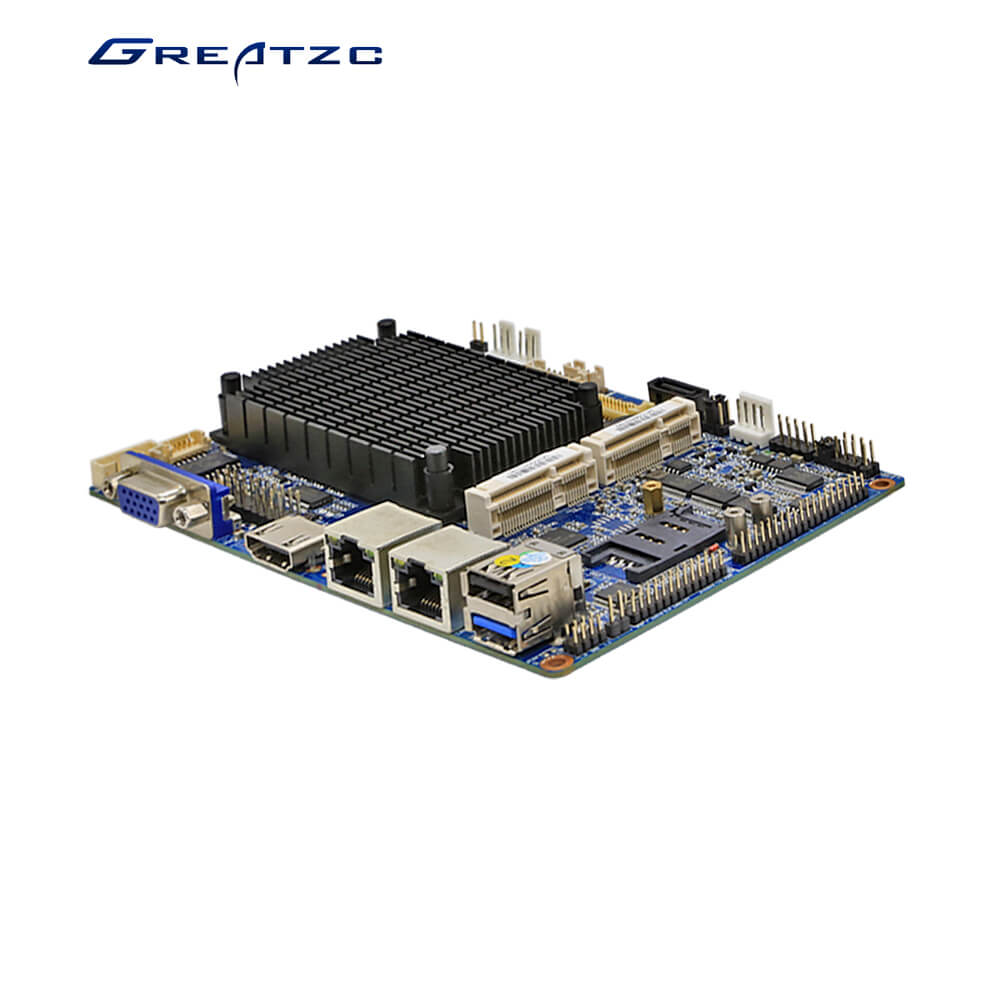As we all know, whether it is a commercial computer or an industrial computer, the core is the motherboard, and the industrial motherboard has a wider range of applications and a harsher use environment. Therefore, users have higher requirements for its functions, compatibility, and reliability. So how do we choose the type of industrial control motherboard when we buy it, and how to determine the advantages and disadvantages? Industrial control motherboard manufacturers share some experience here with years of industrial computer production experience.
1. Motherboard layout
The layout of the industrial computer motherboard is mainly embodied from the arrangement of the components on the industrial computer motherboard and the wiring of the circuit. A good industrial computer motherboard looks like an exquisite work of art in the eyes of experts. In order to save costs and lower prices, some industrial computer motherboard manufacturers can gain a firm foothold in the market. Not only do they reduce the number of board types, they also make corresponding adjustments in the materials and accessories of the industrial computer motherboards, which only meet the needs of the chipset. The basic performance requirements of this kind of cost reduction approach is a test of the manufacturer’s industrial computer motherboard design and layout capabilities. Put the same number of expansion positions in a smaller space, and maintain stability and limit interference. In this way, the rationality of the industrial computer motherboard structure design is particularly important. A little unreasonable design will lead to crashes. In this regard, manufacturers with weak capabilities are easy to make mistakes in these places. The unstable motherboard and poor performance are all caused by this! So when we choose a manufacturer, we must choose a manufacturer that has been doing it for many years. The hardest manufacturer.
2. CPU
The choice of the chipset is the first consideration when choosing a motherboard. Different motherboard chipsets provide different support, and at the same time, the prices are also different. You cannot choose a high-end feature that you can't use at all. You can’t choose a motherboard that doesn’t suit your needs just because the picture is cheap. The principle of motherboard selection is "suitable for yourself and meet your needs."
3. Interface configuration
The interface part often reflects the positioning of a motherboard and the functions provided. Although for most users, the dual network ports and multiple serial ports provided by the interface may not be able to use, but for users in need, This is more important. At the same time, the number of USB interfaces sometimes affects the experience of use. In the interface part, it can explain the positioning of a motherboard. The interfaces provided on high-end motherboards are relatively rich, while on low-end motherboards, you can save or save. Such a province is not a bad thing. In the end, the function requires the user to pay, and the unnecessary interface is not necessary, but if necessary, you must pay attention!
4. Raw materials
The materials used for the workmanship of the industrial computer motherboard are mainly viewed from two aspects: 1. PCB (Printed Circuit Board) workmanship. The color of the PC board with guaranteed quality is basically the same, the finish is good, and the general quality that looks shiny is better. The general standard for the number of PCB layers is 4 or 6 layers. Of course, the quality of 6 layers is much better. 2. The workmanship of SMT (surface mount) components. It is mainly by observing the placement accuracy of certain components to determine whether the production process of the motherboard is sophisticated, and the standard component placement is accurate and there is no offset.
How are the performance, compatibility and reliability of the motherboard tested? These tasks are generally completed by the design certification department of the R&D team. In comparison, performance testing is easier. You can use simple equipment such as CPU, memory, hard disk, and power supply to test the test. The key is to carefully test each performance item by item. Compatibility testing is much more complicated. Testing that the motherboard is compatible with popular mainstream operating systems, industry application software and devices on the market is indeed a work that requires a lot of capital, manpower and time. For industrial users, there is nothing more concerned about the reliability of the motherboard. Reliability testing includes high temperature test, low temperature test, humidity test, vibration test, drop test, anti-static test and lightning test.
Now,today we have talked How to choose an industrial motherboard? Are you clear now?
If there’s any questions of need,pls feel free to contact us website: https://www.greatzc.net
Email:greatzc@industrialpc-motherboard.com Mobile:+86-1789846900


